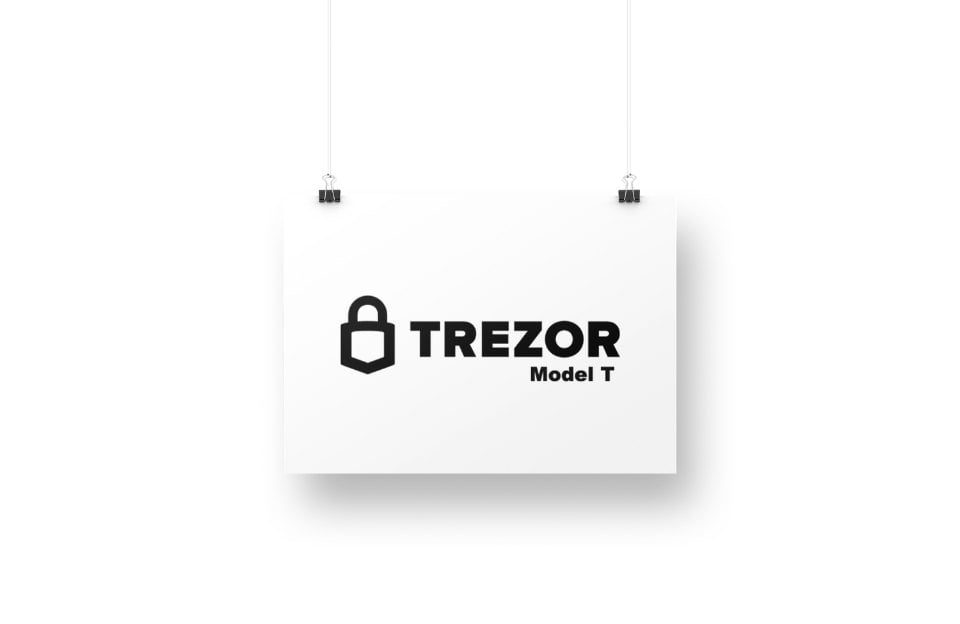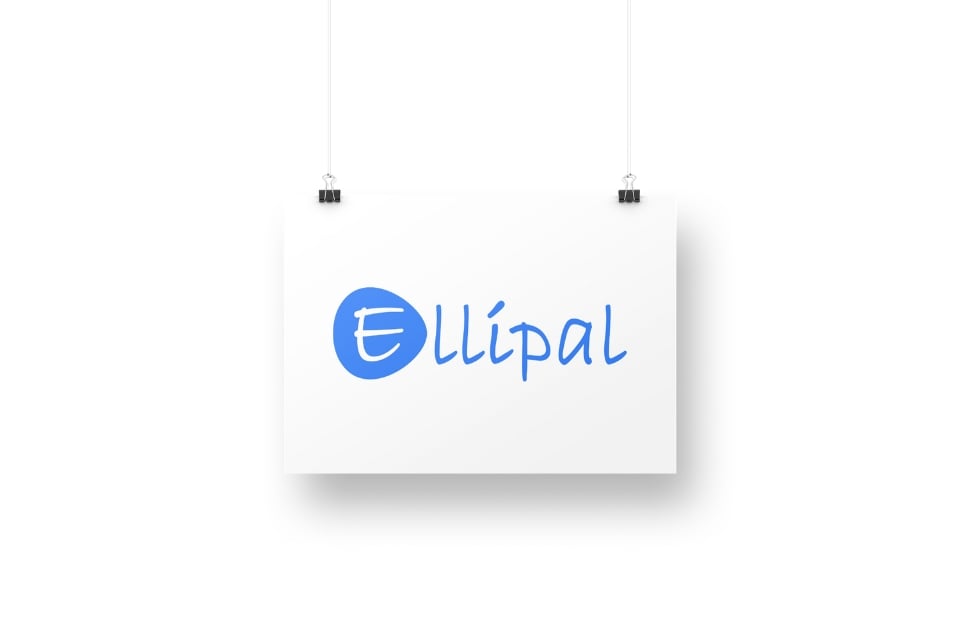Swen Keller
- Home
- /
- Hardware Wallets Reviews
- /
- Trezor Model One Review...
Trezor Model One Review 2024: Features & More
Swen Keller

- URL: https://trezor.io/trezor-model-one
- Software Compatible: Yes (Trezor Suite)
- Price: $69.00
- Staking Rewards: Yes
- Platform App: Desktop, Mobile, Browser
- NFTs Storage: Yes (via third-party wallets)
- No. of Assets Supported: 1308
- Type of Wallet: Hardware wallet
Trezor Model One Review: Our Opinion
The Trezor One is a leading secure hardware wallet that stands out for its affordability and reputation.
It is the best fit for users who want a simple hardware wallet that safeguards digital assets offline.
Trezor Model One falls through in its cryptocurrencies offered (only offers 1,300+ assets) and it does not support iOS devices.
The Trezor wallet, though a hardware wallet is also susceptible to certain security vulnerabilities as it isn’t 100% air-gapped and offers third-party compatibility with certain software or hot wallets.
An Overview of Trezor

Founded in 2013, the company behind the Trezor device (both Trezor One and Trezor Model T) Satoshi Labs is a global business that has shipped thousands of hardware crypto wallets to various nations.
Satoshi Labs was created by Pavol Rusnák and Marek Palatinus as a company built to create solutions to help Bitcoin investors keep their crypto assets in a secure and trust-free way.
The creation of Satoshi Labs led to the Trezor Model One being manufactured as a pocket-sized single-purpose crypto hardware wallet that would store user private keys in an isolated space.
The Trezor Model (only Trezor One at the time), became a thought leader in the hardware wallet space as the Trezor wallet was the first cold storage wallet to introduce recovery seed and passphrase security. This is a security feature used by almost all hardware crypto wallets now.
In addition, both the Trezor One and Model T offer an open-source code that powers more than 10 unique hardware crypto wallets.
Beyond the Trezor One, Satoshi Labs is also the brand behind the Trezor Model T, Trezor Password Manager, Trezor Suite app, etc.
That said, the Trezor One is the original Trezor model as the Model T was launched in 2018.
The Trezor crypto wallet device has also faced a couple of security concerns over the years. First, the Kraken crypto exchange noticed security vulnerabilities that enabled them to hack the Trezor wallet, to which Trezor released a statement in response. Second, a YouTuber hacked a Trezor One wallet to recover $2 million in crypto and detailed the entire process.
Trezor, in response, stated that they fixed the issue in 2017 and the hack required full physical hardware wallet access.
Pros
- Trezor One is portable
- Budget-friendly
- Strong reputation from users
- Supports NFTs
Cons
- Supports only 1,300+ coins
- Not fully air-gapped
Trezor Model One: What is it?

The Trezor One is a two-button pad hardware wallet that allows users to securely store their private keys offline (cold storage) and access the same using a recovery seed phrase.
To access and manage the over 1,000 supported digital assets, the Trezor One is used in conjunction with the Trezor Suite app.
The Trezor Suite app allows users to buy, sell, and exchange digital assets using the Trezor One device.
Trezor One also supports NFT transactions by allowing the user to connect their Trezor Model One wallet to a third-party software wallet like MetaMask that permits NFT transactions on Ethereum.
Inside the Trezor Model One box, the user will find a micro USB cable, the Trezor One hardware wallet, 2 recovery seed cards included, and Trezor hardware wallet stickers.
Trezor Model One Review: Price
The Trezor One is one of the most affordable hardware crypto wallets as it goes for $69.
If you’re adding other accessories such as the Trezor wallet glove or the Trezor One wallet lanyard, it costs over $80.
Other popular hardware wallet options including the Trezor Model T cost over $100 without accessories.
Why Use a Cold Storage Wallet?
A cold storage wallet keeps users crypto safe by generating and storing private keys offline. The private keys are needed to sign transactions on the wallet. And the wallet can only be accessed and transactions signed on by whoever holds the private keys.
By generating and storing these private keys offline, cold storage wallets eliminate the risks associated with storing private keys online.
This is contrary to what is available with hot or online wallets. Hot wallets generate and store users’ private keys online. This makes the keys vulnerable to malicious attacks.
For users to send crypto and make other transactions with a cold wallet, they will first need to connect the wallet device using a USB cable, Bluetooth, or QR code, to another device.
Once this is done, the user will be required to manually enter a pin on the wallet device. This rigorous process is what makes cold wallets more secure than hot wallets.
Although hardware or cold wallets provide increased security for users, this heightened security comes with a trade-off in terms of convenience.
Asides from the several stages required to complete transactions, cold wallets can also not be accessed in one step like hot wallets which can be accessed via a simple login.
That said, cold storage wallets are not designed to be used daily. The term “cold” implies that the crypto stored in the wallet is not accessed for a relatively long period. In most cases, active traders use a combination of both hot and cold wallets. The hot wallet offers convenience while the cold wallet offers security.
The major advantage of hardware crypto wallets is the iron-clad security they provide against online attacks like smart contract bugs, software viruses, clipboard malware, phishing scams, etc. Most software wallets fail at this because the private keys are stored online and can be easily exploited by malicious third parties.
Cold storage wallets are almost 100% immune to these kinds of attacks because asides from the fact that the entire wallet generation process is kept offline, they also have advanced security features like multi-signature support, recovery seed cards, additional passphrase, anti-brute force security features and wiping of the device under certain circumstances.
Since cryptocurrency transactions are largely irreversible, it is important to have security features in place to ensure that the users’ funds are secure at all times. This is what cold storage wallets provide.
Another advantage of cold storage wallets is the control it gives you over your private keys. Most hot wallets are custodial, which means that the wallet keeps custody of your private keys, in most cases the private keys are stored online.
Despite the various security measures put in place by most hot wallets, users’ crypto assets are still at risk of attacks.
There have been several cases where users lost crypto assets worth millions of dollars due to a security breach on the hot wallet being used.
There have also been cases where crypto exchanges collapsed and users lost the funds they had in the exchange’s hot wallets. A recent example is the FTX hack which resulted in the loss of $8.8 billion in customer funds.
Cold storage wallets are self-custodial and hence not susceptible to any of these. The user is responsible for the security of the private keys and since the transactions are generated offline, the chances of it being attacked are very low.
Even if the parent company of the wallet goes out of business, users will still be able to access their assets stored in the hardware wallet. Also, if you lose your wallet, you will still be able to gain access to your crypto assets using your recovery key on another hardware wallet device.
Cryptocurrencies Supported

The Trezor Model One wallet supports over 1300 cryptocurrencies, this includes all ERC-20 tokens.
Tokens supported include Bitcoin, Ethereum, Litecoin, Avalanche, Binance Coin, ZCash, Optimism, Dogecoin, Tether, USD Coin, XRP, Polygon, Solana, Polkadot, Shiba Inu, Binance USD, Wrapped Bitcoin, Uniswap, Dai, Ethereum Classic, Stellar Lumens, Bitcoin Cash, Aptos, Filecoin, etc.
Does Trezor One Support NFTs?
Yes, the Trezor One hardware wallet supports NFTs. However, this is only by connecting your Trezor to third-party software wallets that allow users to store and manage NFTs like MetaMask. You cannot manage your NFTs on the Trezor Suite.
This has raised safety concerns in the past, but Satoshi Labs has mentioned that this is still safe as long as the user correctly sets up the third-party wallet to communicate directly with the Trezor hardware wallet so that the recovery seed remains offline continuously.
Trezor’s NFT support also only applies to NFTs created following the EIP-721 Ethereum standard that enables receiving, storing, and sending NFT tokens on the Ethereum network.
Currently, both the Model T and Trezor One do not support other networks and do not have any immediate plans to add them as approved networks in the future.
To use the Trezor One to store your NFTs all you need to do is launch the Trezor Suite and go to Accounts, then click the green plus sign beside My Accounts.
This will launch a menu for adding fresh digital assets.
Click on Activate “More Coins” and select Ethereum from the list.
Next, choose ‘find my Ethereum accounts’.
This will create a new Ethereum account. To get its receiving address, click Receive then Show Full Address.
Next, install MetaMask, launch it, and click the circle at the top right of its interface.
In the drop-down menu that appears click Connect Hardware Wallet.
Choose Trezor from the options and select the Trezor Model.
Next, allow MetaMask to read public keys from the Trezor. For this to work, your Trezor hardware wallet must be connected and unlocked.
You will also need to enter any passphrase connected to your account.
You will see a list of accounts, choose the one you just created and click unlock.
Now, you will be able to sign NFT transactions on your Trezor and manage your NFTs via MetaMask.
How to set up Trezor One Hardware Wallet

To set up your Trezor One hardware wallet you will need the following:
- Trezor Model One device and micro USB cable
- Recovery seed card
- Trezor Suite app for desktop or web
To get started, launch the Trezor Suite app, which will prompt you to connect your Trezor Model One device.
Next, allow or opt out of anonymous data collection.
After connecting your Trezor Model One, you’ll be asked to do a security check.
This requires that you check if the packaging is intact and if the holographic seal hasn’t been tampered with. If it has been tampered with contact Trezor support immediately.
Trezor support states that they will do their best to send you a replacement Trezor device.
After you’re done with the security check and have ensured that everything is correct, click Setup Trezor.
Trezor wallets are shipped without firmware, so the next step involves you having to install the recent version by clicking the Install Firmware button.
After firmware installation is completed successfully, hit Continue.
Next, you should select ‘Create new wallet’ if this is the first time you’re setting up your Trezor One hardware wallet.
Once you’ve selected ‘Create new wallet’ you’ll see a prompt to select the default ‘Standard seed backup’ recovery process.
After you’ve selected ‘Standard seed backup’ hit the Confirm button on the Trezor device.
Next, you need to create the backup, which involves recording your recovery seed phrase on the recovery seed cards included in the package.
To start the process, click Create Backup.
Once you press the Confirm button on your Trezor hardware wallet, the Trezor Model One will generate a list of words that you should write down in the order shown to you on the recovery seed card provided.
After recording all words in the right order (Trezor Model One hardware wallet shows 24 words), you will be shown that the crypto wallet backup is complete.
You will then be able to proceed to set up your PIN to secure your Trezor Model One from unauthorized physical access.
Once you’ve selected Continue to PIN, you will land on the ‘Set a PIN’ page.
Click on Set PIN to start the process and hit the Confirm button on your Trezor One device.
In the ‘Set New PIN’ window, you will see a matrix keypad on your right-hand side.
Use your cursor to choose the corresponding digits in the 3×3 matrix to choose your new PIN.
Next, you will need to repeat the new PIN.
If you’re setting up your Trezor One device for the first time, you would need to input your new PIN twice.
After this, you should see the ‘PIN Set’ window.
Click on Continue to be directed to the ‘Activate Coins’ window. Supported coins for the Trezor One are over 1,300.
You can choose any of the coins supported as shown in the Trezor Suite. This can be changed at any point.
After you’ve selected the coins you intend to use, click Complete Setup and that’s it!
To get started simply click the ‘Access Suite’ and ‘Select Wallet type’ option and then the ‘standard wallet’ option.
That’s it! You’ve successfully set with your Trezor Model One device.
Trezor Model One Security

Just like other hardware wallets, the Trezor Model One hardware wallet has several security features to ensure that users safely store their crypto assets without any vulnerabilities to attacks.
All Trezor hardware wallets meet all reliability, quality, and environmental standards because they are RoHS and CE certified.
The Trezor Model One package is wrapped in a thin plastic foil and secured with 2 silver seals. The package is also sealed with strong glue. And the glue makes it impossible for the package to be opened without tearing it apart.
The hardware wallet is packaged in this way to make it easy for the user to identify if the wallet device they receive has been tampered with.
Users are encouraged to double-check the package and ensure that the holographic seals are not torn or missing. If there is any sign that the package has been tampered with, you shouldn’t use it.
The Trezor Model One crypto hardware wallet has a micro USB (type B) receptacle port at the bottom. It is compatible with USB 2.0 and USB 3.0. Aside from the USB port, the wallet does not have any other means of communication like Bluetooth, WiFi, Fingerprint, and NFC. These means of communication are absent from the device to limit the possible attack surface.
The Trezor Model One wallet also has an OLED screen which has enough space to display transaction details, display simple images, request transaction confirmation, and display warnings.
The screen allows you to check the details of all data and transactions before approval.
All Bitcoin transactions on the Model One wallet are independently confirmed and directly confirmed physically on the hardware device.
This means that physical access to the card is required for all transactions to be verified.
That said, the Trezor Model One hardware wallet is protected by a user-defined PIN code.

The PIN can be up to 50 digits long. And the wallet also has a waiting time between each wrong PIN attempt. Every time the wrong PIN is entered, the wait time between attempts increases by the power of 2.
After 16 unsuccessful PIN attempts, the hardware wallet will automatically wipe itself and erase all data.
To further boost the security of the device, users can also add a passphrase to their wallet device. The passphrase will be required for every login attempt.
The Model One has the official Trezor firmware which is signed by the SatoshiLabs master key. If unofficial firmware is installed on the Trezor hardware wallet, it will wipe the device storage and display a warning every time the device is powered on.
The Trezor Model One hardware wallet device can operate in temperatures within the range of -20°C to +60°C (-4°F to +140°F). X-Rays do not damage the device.
That said, the Trezor Model One wallet is not unbreakable or waterproof. It should also be protected from extreme temperatures, sand, humidity, vapors, or chemicals.
Different Trezor Models Comparison
Trezor offers two Trezor wallet models, the Trezor One (original hardware wallet) and the Trezor Model T.
Here’s how both hardware wallets compare:
Trezor Model T

- Price: $219
- Operation: Touchscreen/1.54” Color LCD
- Connection: Micro USB cable included
- Supported coins and tokens: 1,400+
- Backup: Advanced Shamir backup and Standard Seed backup
Trezor One

- Price: $69
- Operation: 2 clickable buttons
- Connection: USB – A included
- Supported coins and tokens: 1,300+
- Backup: Standard seed backup
Opening an Account with Trezor
To open a Trezor wallet, connect your hardware wallet and open the Trezor Suite.
Next, go to the My Accounts menu bar, hit the plus sign, and choose the crypto coins you intend to manage in your account.
Trezor Suite

Trezor Suite is the Trezor web wallet app and the main interface for the Trezor hardware wallet. It is a software interface that provides a multi-functional platform for Trezor devices. It gives you an easy way to buy crypto using several payment methods, compare crypto exchanges in real time, and choose the best offers on your desktop or mobile device. If you have the latest version of Trezor Suite, you do not need to install Trezor Bridge.
Trezor Suite is compatible with Windows, Linux, and MacOS.
For its primary function, Trezor Suites wallets generate addresses from the seed stored on your Trezor device for incoming transactions and to authorize outgoing transactions.
It also allows you to create individual wallets for different cryptocurrencies which makes the tracking and managing of balances easier.
Trezor Suite also offers hidden wallets. The hidden wallets offer enhanced security and privacy using passphrase entry. Your passphrase offers second-factor protection and security against attacks that involve physical access to the wallet device.
While the Trezor hardware wallet supports an unlimited number of accounts, the Trezor Suite only supports a maximum of 10 accounts per crypto currency.
Trezor Suite offers 2 types of accounts: Standard accounts and legacy accounts. Standard accounts are the default accounts available for all supported cryptocurrencies in the Trezor Suite. Legacy accounts, on the other hand, are only available for SegWit-enabled cryptocurrencies and for holding transactions of the previously standard type that have been made obsolete.
Trezor Suite users can easily switch from a Legacy account to a standard account by moving the funds to a new wallet.
Trezor Suite also has the Remember and Eject Functions. These functions give users control over privacy, security, and ease of use for each wallet enabled on Trezor.
The Remember function allows you to monitor incoming or outgoing transactions and watch account activities without tracking your Trezor Wallet out of storage. It does this by tracking the extended public key (XPUB) of the wallet.
If you wish to stop tracking address balance, you can use the Eject function. The Eject function removes the wallet from view while Trezor Suite is running.
This comes in handy when you are using a public or shared computer. Ejecting any saved wallet will prevent your wallet balance from being viewed.
Both the Eject and Remember settings can be activated by clicking on the top-left button showing the Trezor device. To find a wallet that has been ejected, you will need to click “Add wallet” or reconnect to unlock your Trezor.
Customer Satisfaction
Trezor offers customer service via its AI Chatbot, Hal. It also has a help center and a learning page featuring guides, articles, and blogs on how to use and safeguard the wallet.
In addition, Trezor has a forum where users can interact with each other and troubleshoot common problems together. Customers who wish to get real human support, you can contact Trezor support by submitting a support ticket.
The majority of Trezor customers are satisfied with the security of the Trezor One device and the quality of service rendered by the customer support team.
Where can I Buy a Trezor One Wallet?
You can buy a Trezor One wallet via the official Trezor website: https://trezor.io/trezor-model-one.
Alternatives to Trezor One
Popular alternatives to the Trezor Model One include the Ledger Nano X and Ngrave Zero and of course Trezor Model T. The Trezor One is the cheapest option of its alternatives but falls through in digital assets offered.
Final Thoughts
The Trezor One hardware wallet stands out as a budget-friendly option for crypto investors looking to secure their digital assets offline.
However, users looking for a large selection of digital assets that alternatives such as the Ledger Nano X offers will be better off going for other cold storage options.
FAQ
Most frequent questions and answers
The Trezor One has been hacked before by a YouTuber that intended to retrieve $2 million from a lost account. However, Trezor stated that it has since fixed the problem that made this possible.
Yes, the Trezor One is legit. It is arguably the first hardware wallet to make cold storage available to all types of users.
If you want better accessibility features such as a touchscreen Trezor device and more digital assets supported then the Model T is the better option.
However, if you want a more compact Trezor then the Trezor One is a preferable option.
Yes, Trezor wallets are worth it, if you intend to keep your private keys offline and securely store your assets from online hackers.
We always try to provide the most accurate information available, and make sure our team follow through.
If you want to know more about our Crypto Exchanges Review Methodology follow the link below
Skrumble.com provides all its content for informational purposes only, and this should not be taken as financial advice to buy, trade, or sell any investment instruments or products, including but not limited to cryptocurrencies, or use any specific exchange. Please do not use this website as investment advice, financial advice, or legal advice, and each individual’s needs may vary from that of the author. Investing in financial instruments, including cryptocurrencies, carries a high risk and is not suitable for all investors. It is possible to lose the entire initial investment, so do not invest what you cannot afford to lose. We strongly advise conducting your own research before making any investment decisions. This post includes affiliate links with our partners who may compensate us.
To view our privacy policy read here.






